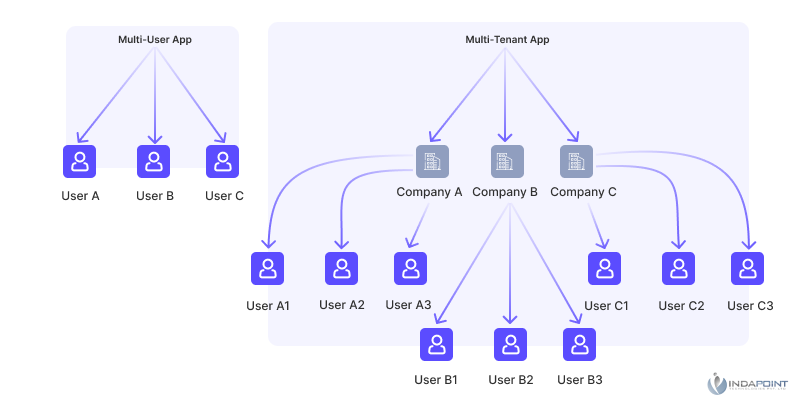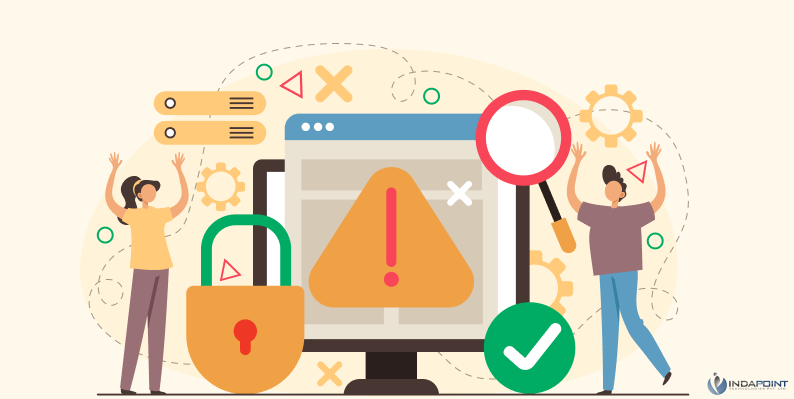Implementing Multi-Tenancy in Laravel: Strategies and Pitfalls
October 13, 2023

Multi-Tenancy is an architectural strategy that allows a single application to serve multiple tenants by segregating their data and configurations. Laravel, a widely used PHP framework, offers advantages such as cost-effectiveness, scalability, and maintenance simplicity. Implementing Multi-Tenancy in Laravel requires strategies such as database separation, tenant identification, routing, tenant authentication, and data isolation. However, it also presents challenges such as performance limitations, data loss and security threats, customer acquisition and data migration, scalability concerns, and maintenance and upgrades. Best practices for successful Multi-Tenancy implementation include documenting code organization and sanitation, sharing knowledge on optimizing Laravel for Multi-Tenancy, and creating comprehensive documentation for multi-tenant applications. Comparing Laravel to other technologies and real-world examples can provide valuable insights.
Implementing Multi-Tenancy in Laravel: Strategies and Pitfalls
In the fast-paced world of web application development, businesses of all sizes are always searching for ways to scale effectively and serve multiple customers or users. Multi-Tenancy therefore enters into play. This article will explore Multi-Tenancy in Laravel, one of the most widely used PHP frameworks. We will examine the strategies, pitfalls, and best practices associated with implementing Multi-Tenancy in Laravel so that you can make informed judgments about your technology stack.
What is Multiple Occupancy?
Before discussing Laravel’s Multi-Tenancy features, let’s define Multi-Tenancy itself. Multi-Tenancy is an architectural strategy that enables a single application to serve multiple tenants by segregating their data and configurations. These tenants may be distinct consumers, departments, or organization-wide users. Multi-Tenancy has several advantages, including cost-effectiveness, scalability, and maintenance simplicity.
Implementation Strategies for Multi-Tenancy in Laravel
Multi-Tenancy implementation in Laravel requires numerous strategies and considerations. Let’s examine some crucial aspects:
- Separation of Databases and Schema Design : Using distinct databases or database schemas to separate tenant data is a common method. The data of each tenant is stored in a separate database or schema to ensure data isolation. Laravel provides tools for managing database connections and migrations, which makes installation relatively simple.
- Methods of Tenant Identification : Laravel provides multiple methods for tenant identification. Using a unique identifier, such as a subdomain, to ascertain the tenant associated with a request is one method. This can be accomplished using middleware or routing techniques to provide tenants with a seamless experience.
- Routing and Subdomain-Based Tenancy : Subdomains are widely used for tenant identification. The routing capabilities of Laravel make it simple to configure subdomain-based tenancy. Each subdomain can be configured to point to a specific tenant, ensuring that queries are directed to the appropriate database and resources.
- Tenant Authentication and Authorization : It is essential to ensure secure access to tenant-specific data. The authentication and authorization mechanisms of Laravel can be extended to support Multi-Tenancy. Access can be restricted based on a user’s tenant affiliation with the assistance of RBAC and middleware.

Maintaining data isolation between tenants is crucial for ensuring security. Using Laravel’s database utilities, data segregation can be implemented, preventing unauthorized access to tenant data.
Perils and Obstacles
Multi-Tenancy in Laravel provides a number of benefits, but it also presents a number of challenges that must be addressed:
- Performance Limitations : As the number of tenants increases, there may be cause for concern regarding performance. Maintaining system performance requires meticulous indexing of databases, caching strategies, and load balancing.
- Data Loss and Security Threats : Insufficient data isolation can result in data leaks and security breaches. To mitigate these risks, proper security measures, including encryption and access controls, are essential.

- Customer Acquisition and Data Migration : New tenant onboarding and data migration can be complex. Developing efficient processes and tools for these duties is crucial to streamline operations.
- Support and Upgrades : Multi-Tenant applications can be more difficult to maintain and update than single-tenant applications. To avoid disruptions, effective version control and testing procedures are required.
Best Methods
Consider these recommended practices for a successful Multi-Tenancy implementation in Laravel :
- Multiple Tenant Best Methods : Document and adhere to best practices to maintain code organization and sanitation.
- Tips for Laravel Multi-Tenancy : Share your knowledge on optimizing Laravel for Multi-Tenancy.
- Documentation for Multiple Occupancies : Create comprehensive documentation for your Multi-Tenant application in order to facilitate integration and troubleshooting.
Comparing Laravel with Other Technologies
Laravel is an effective option for Multi-Tenancy, but how does it compare to other technologies? Let’s compare Laravel to several other frameworks and platforms:
- Compared to Other Frameworks : Discuss the advantages and disadvantages of Laravel in comparison to Django, Ruby on Rails, and Node.js.
- Multi-Tenancy in Various Tech Stacks : Investigate how Multi-Tenancy is implemented in various tech stacks.
- Strengths and Weaknesses of Laravel : Describe why Laravel is a strong contender for Multi-Tenancy and any potential limitations it may have.
The conclusion
In conclusion, mastering Multi-Tenancy in Laravel requires meticulous planning and consideration of various strategies and pitfalls. However, when properly implemented, it provides a potent solution for businesses seeking to efficiently serve multiple clients or consumers. The adaptability and robustness of Laravel make it a compelling option for Multi-Tenancy.
At IndaPoint Technologies Pvt. Ltd, we specialize in crafting tailored Multi-Tenancy solutions that align perfectly with your unique business requirements. Our team of experienced developers and technology experts is here to guide you through every step of the journey.






